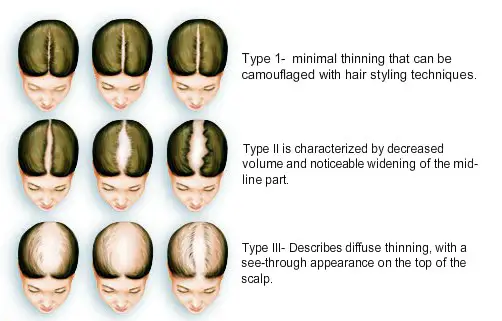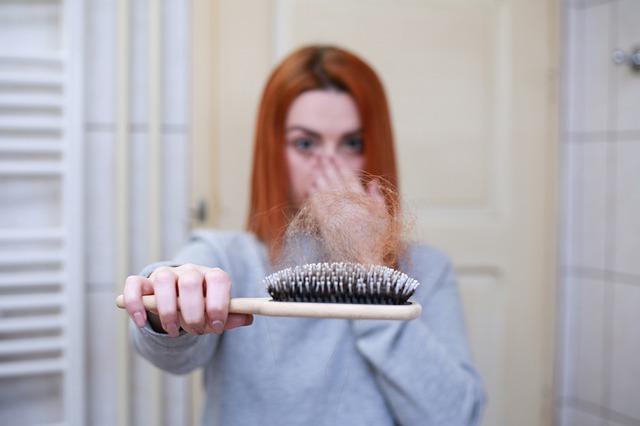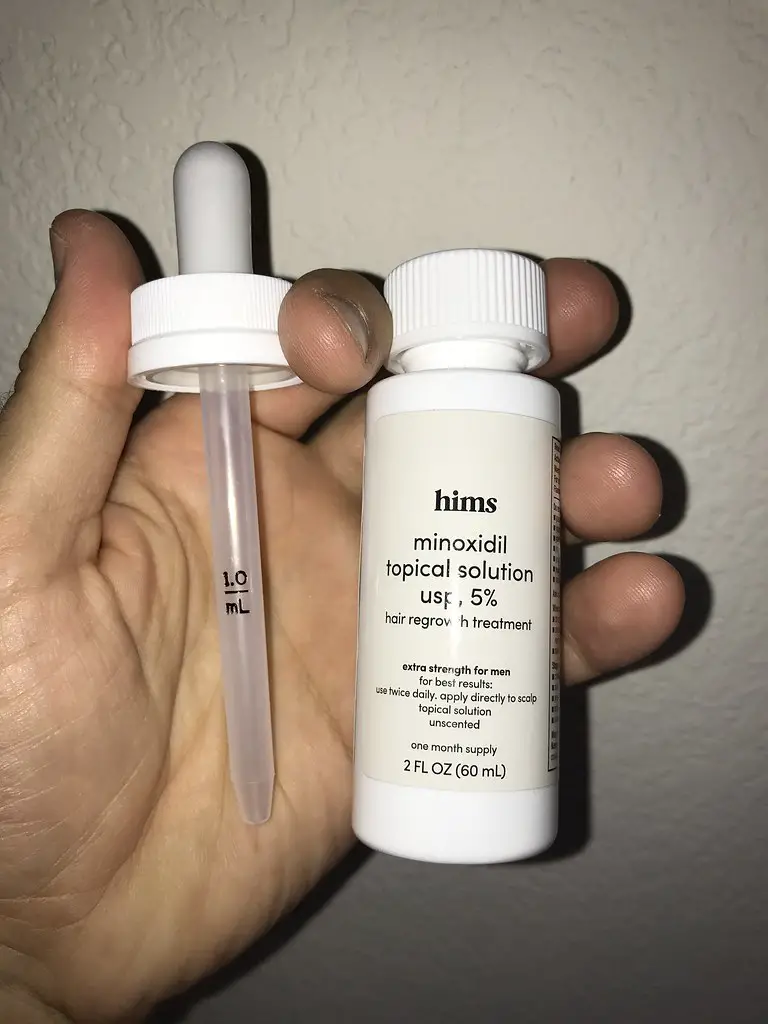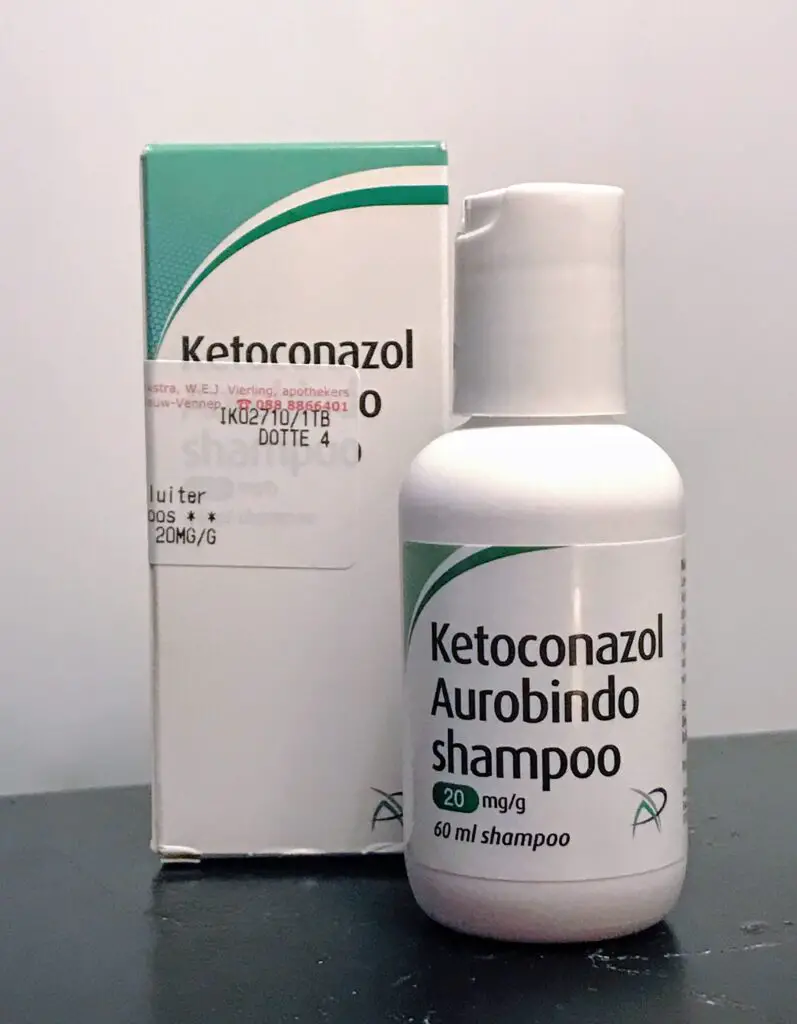Last Updated on March 27, 2022 by Rei
I want to make this guide for all the women out there who are suffering hair loss. I want help them get a better understanding of what really works for women’s hair loss.
Watching my mother deal with hair loss always makes me sad. I remember her looking at the mirror, checking her hair, and I can see in her eyes how sad she is losing her hair.
And I remember all the products that she used to buy hoping that it would solve the problem.
As a man managing hair loss is hard enough, I can’t imagine what it’s like for women to go through hair loss.
Table of contents
- The basics
- What are the common causes of hair loss in women?
- What works for women’s hair loss?
- Summary

The basics
What is hair loss in women?
Hair loss in women is not so different from any other form of hair loss. Female pattern baldness is also called androgenetic alopecia.
This type of hair loss is similar to male pattern baldness, except that the pattern is different.
Here is the pattern for female pattern baldness:

Although this is the most common form of hair loss for women, there are a lot of factors that can cause hair loss.
Is losing hair normal?
According to the American Academy of Dermatologists, losing hair is normal. We lose anywhere from 50 to 100 strands of hair every day.
Approximately 40 percent of women lose extra hair everyday due to the way they style it.
So don’t worry too much when you lose hair in the shower. If you were really losing more hair than usual, you would notice it right away because there are usually other signs to look out for.
Psychological effects of hair loss in women
Regardless of gender, hair loss would be devastating, it can negatively affect anyone’s quality of life.
Experiencing hair loss as a woman is a little different than men. Hair loss in men is generally more accepted in men.
When you see a bald man walking past you would you even notice?
For women being bald is generally not as accepted as it is for men with regard to hair loss.
Women can’t just “shave it”
Studies show that the psychosocial impact of hair loss is so emotionally devastating. That it can cause a lot of emotional issues, and it can negatively impact a person’s quality of life. For women, this often leads to overeating, avoiding exercise, and avoiding social events.
How Common is hair loss in women?
It is estimated that more than 50 percent of women would experience hair loss. A lot of this is caused by many factors, including styling, female pattern hair loss (FPHL), premenopausal women, and is greatly increased in postmenopausal.
How Do I measure my hair loss?
To measure hair loss, you can try to do the “pull test.” Gently run your fingers through your hair. If two or three hairs are left in your hand every time you pull, you may be experiencing hair loss.
I would recommend going to the doctor just to make sure that it is, so that you can put your mind at ease.
What are the common causes of hair loss in women?

Hormone imbalance
The relation between hair loss and hormone imbalance in women is caused by reduced estrogen and progesterone production. This fall of hormones causes the effects of androgens, male hormones, are increased.
But some people even with increased androgens, would not develop hair loss. This all comes down to genetics. If you have a genetic predisposition to follicle sensitivity, then hormonal imbalance would affect your hair loss.
Alopecia
A lot of women would experience hair loss in their life. It usually starts around menopause, when estrogen and progesterone production significantly fall.
Androgenetic alopecia is a condition that is caused by the hormones called androgen. They are the male hormone responsible for a lot of things during development. This includes sex drive and regulation of hair growth.
The effects of androgenetic alopecia in women essentially make the hair longer for them to grow back. Also, it makes the hair follicle itself shrink, making the hair shorter and thinner.
This process is called “Follicular miniaturization.” When this happens it makes the hair turn “vellus” meaning shorter and thinner hair.
Another cause of hair loss for women is the condition called alopecia areata. This condition is caused when white blood cells attack the hair follicles.
This in turn would shrink and dramatically slow down hair production leading to hairs falling out in small patches around the size of a quarter.
Traumatic alopecia is another type of hair loss that is caused by injury to the scalp, usually by grooming methods.
Girls, be careful on how you style your hair. Tight ponytails, braids could cause hair loss. If you damaged your hair follicles, the loss could be permanent
Stress
Stress, although temporary, could also cause hair loss. This can mean many things, including events like losing weight too fast (more than 20 pounds), childbirth, and illness.
Polycystic Ovary Syndrome (PCOS)
Although I already discuss the effects of hormones in hair loss, this one deserves a separate topic. Having personally known a few women who have this condition.
Polycystic ovary syndrome (PCOS) is a condition that causes excess androgen to be released. This results in physical symptoms that include hair loss in women.
Symptoms for PCOS includes, irregular periods, severe acne, hair loss, and weight gain.
What works for women’s hair loss?

First, go to the doctor and get a blood test. You may have underlying factors that only a doctor would be able to diagnose. Going to the internet looking for OTC treatments is fine as long as the doctors clear you that everything under the hood is fine.
So now that we got that out of the way, here are some of the things you can try that works for women’s hair loss.
Minoxidil

Minoxidil is one of the two FDA approved treatments for hair loss. It works by stimulating the hair follicles and increasing blood flow to the affected area.
Minoxidil is sold under the drug name Rogaine, but there are many brands out there of minoxidil that you can buy OTC. There are two types of minoxidil sold in the market, the 2% solution and 5%.
Although both of them would work, it is recommended that women use the 2% solution. No extra benefits are shown for using higher concentrations of minoxidil.
Don’t be alarmed if you notice increased hair loss in the first few months of using minoxidil. This is completely normal and part of the process of how minoxidil works.
If you did see results after a few months, continue using it indefinitely.
This is meant to be used for life.
I know this sounds like a lot of commitment, but if you don’t experience any side effects, applying it for a few minutes every day is totally worth it.
If you miss a day, just continue the next day, don’t stress about it too much.
Ketoconazole

Ketoconazole is another proven treatment for hair loss. It belongs to the famous “Big Three” treatments for hair loss.
Ketoconazole works by reducing the inflammation to the scalp. It is believed that inflammation to the scalp has a role in androgenetic alopecia.
Ketoconazole is also available over the counter by the brand name Nizoral.
Take iron supplements
If you are losing hair, it is also possible that you have an iron deficiency/anemia. It is one of the most common causes of hair loss in women. That is why going to the doctor and having a blood test is recommended, so you don’t waste time with other treatments.
Vitamin B12
Another vitamin that can cause hair loss when you have a deficiency in vitamin B12. It is most common for vegans as this vitamin is mostly obtained in animals. Again go to the doctor and have your blood checked just to be sure.
Reduce the amount of stress in your hair
Remember Traumatic alopecias? That’s right, styling your hair that places stress on your hair follicle might permanently damage them. Go easy on your hairstyle for now, and try to avoid heavy styling products.
Summary
There are hundreds of factors when it comes to hair loss. It might be genetic, stress-induced, or a vitamin deficiency, going to the doctor should be your first move. They would be able to tell you what a hundred articles on the internet would not.
The things we mention here that works for women’s hair loss should be your second move. Going to the doctor should always be the first because hair loss is really tricky.
That’s why after 60 years so little progress has been made when it comes to hair loss.
Another thing I want to add is don’t freak out. Freaking out and checking your hair every minute would do more harm than good. Remember that stress is also a factor for hair loss. For now, try to avoid looking at the mirror and checking it. Just take a picture every week to keep a record of your hair loss progression.
